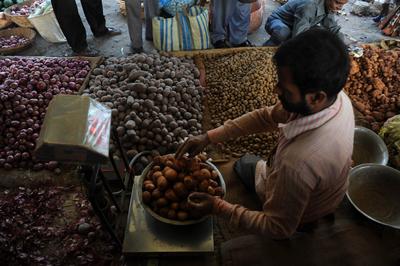But India has focused excessively on financing deficits and neglected growth-promoting domestic reforms — a strategy which is risky at best and disastrous when the global markets are fragile as they are now. Domestic and international reform to encourage economic growth is the sustainable way forward. Short-term measures to alleviate the current account deficit or reduce pressures on the rupee are all, at best, only stop-gaps.
But of course, in a democracy that is going into an election year, only politically friendly reforms are likely to be undertaken. So can politicians persuade their constituents to accept reform?
It is often said that politicians won’t bother about an issue unless a large enough proportion of voters care about it. So far, the conventional wisdom has been that India’s middle class, which cares about growth, is too small a vote bank to drive policy.
But tech-driven awareness has made the poor aspire to join the middle class. Near-universal enrolment in schools suggests that all Indians want good jobs for their children. So, growth and good governance are important for even the poor and weaker sections. The persistent poor do require support, but what they really seek today is the prospect of a better life. State governments delivering on these aspirations have been voted back in — a relatively recent trend.
In other words, populism will not be enough in the new political economy.
India’s politicians have begun responding to this new constituency. For example, although most media analysts predict legislation like the National Food Security Bill will have only negative results for growth, these reforms may be a step to reducing inflation and encouraging growth.
The government is now the largest hoarder of food grains in the country, and its policies have contributed to high food inflation as well as distorting markets and the production incentives of farmers. It has also found it difficult to dispose of these massive stocks. To the extent that the new food security law helps transfer grains to consumers, the government’s stock should be reduced in the short run.
In the longer run, the government could reduce the amount of food it has to stock if clauses in the bill to unlock the market are activated. Ideally, the government would then only have to operate dedicated ration shops in remote areas, which cannot be catered to by regular market channels efficiently.
Other parts of the bill could also work well. Cash transfers to consumers will allow them to purchase expensive but more nutritious produce in line with changing preferences— especially fresh vegetables and protein-rich foods. These changes are the most important in the bill. Complementary marketing reforms will also give farmers an incentive to grow more popular crops. Only when they are well established will the scheme achieve its aim and transfer real purchasing power to the poor by lowering inflation.
The other set of fundamental reforms required are in the international sphere.
After the GFC, advanced economies pumped money into the financial systems to revive their economic fortunes. Now, as that stimulus is wound down, investors are leaving emerging markets and returning home, which has lowered the value of assets and currencies in emerging economies. The G20 and the IMF need to evolve some means to make advanced economies accountable for the consequences of their policies. One option could be to provide affected countries with liquidity that is calibrated to the withdrawal (or ‘tapering’) of quantitative easing (QE) policies.
But dominant financial voices have been denying that advanced economies hold any responsibility for the woes of emerging markets. In fact, they argue that emerging markets gained from the QE-induced capital flows. The increased capital allowed India, for example, to finance its large current account deficit. If QE helped emerging markets in the past, so the argument runs, they cannot complain today when it is tapered.
But QE-induced capital movements have followed a risk-on risk-off pattern depending on global fragilities, independent of India’s domestic cycle or needs. They have now triggered persistent inflation in India, as capital outflows cause currency depreciation.
QE actually widened the current account deficit by pushing up the prices of all asset classes, including commodities imported by India. This increase in the current account deficit clearly had little to do with excess demand, as India simultaneously registered a decline in growth rates. And although QE made it easier to finance the deficit, India’s dependence on foreign capital flows allowed policymakers to neglect the essential domestic structural reforms required to keep the money here in the long term.
If policy makers in advanced economies refuse to accept responsibility for the volatility that their policies have created, then it may be time for emerging markets to think about creating alternative institutions that make them less hostage to the monetary policies of foreign states. These arrangements could include trade and currency swaps between Asian and Middle Eastern countries. In the meantime, however, India needs to enact its own reforms.
Ashima Goyal is Professor of Economics at IGIDR, Mumbai.

